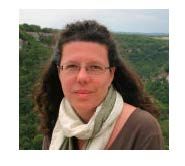Determining the Presence of Ancient Cereals Using GC–MS AND HPLC–MS
The Column spoke to Erika Ribechini, Associate Professor of analytical chemistry in the Department of Chemistry and Industrial Chemistry of the University of Pisa, Italy, about her research into cereals in ancient diets and the role of chromatography in establishing their importance.
The Column spoke to Erika Ribechini, Associate Professor of analytical chemistry in the Department of Chemistry and Industrial Chemistry of the University of Pisa, Italy, about her research into cereals in ancient diets and the role of chromatography in establishing their importance.
Q. Your group has been studying the presence of cereals in ancient archaeological vessels using gas chromatography–mass spectrometry (GC–MS) and high performance liquid chromatography–electrospray ionization–quadrupole time of flight (HPLC–ESI-QTOF) using ergot fungi biomarkers (1). What led your group to begin this study?
A: Archaeologists are certain that cereals were very important for ancient populations, but such an idea is not supported by the equally important archaeological and botanical evidence. From a chemical point of view, this is not surprising because cereals are mainly made up of lignocelluloses that are susceptible to attack by insects, bacteria, or other micro-organisms and can completely disappear. We therefore decided to study that problem from another perspective and look for biomarkers, in other words chemical signatures left by cereals. After analyzing many organic residues collected from archaeological samples using GC–MS, we realized that ricinoleic acid, metabolically produced by Claviceps (ergot-a common pest of cereals), could be the chemical signature we were looking for. Ancient populations did not use pesticides and fungicides, and for that reason cereals had to be contaminated by fungi that left their lipid traces.
Q. Can you tell us about the role of chromatography in this research?
A: Chromatography coupled with mass spectrometry, both GC–MS and HPLC–MS, has a fundamental role in our research because it is an unrivalled tool for deriving detailed compositional information in terms of both chemical structure elucidation and compound distribution, allowing us to reliably recognize the organic molecules present in our archaeological samples.
Q. What is novel about your approach?
A: The analysis of lipids from archaeological objects to reconstruct ancient dietary habits concerning the use of meat, milk, and seafood, is well documented and reported in the literature (2–5). It is based on the analysis of the lipids that are characteristic of the chemical composition of each food. However, in the case of cereals this was not possible and we used a novel biomarker approach entailing the detection of secondary lipid metabolites produced by fungi of the genus Claviceps to identify the original presence of cereals.
Q. What were the biggest challenges from an analytical chemistry perspective?
A: The separation, characterization, and determination of many compounds that are really similar to each other. In this sense, the use of high resolution mass spectrometry was fundamental because it allowed us to avoid the problems related to the analysis of isobaric compounds and thus to structurally characterize many more compounds.
Q. What were your main findings and were there any results that surprised you?
A: Using our approach, we have demonstrated that the complex and robust chemistry of ergot lipids provides a unique chemical signature for indirectly detecting the presence of cereals in archaeological contexts.
In some cases, the data and results obtained by GC–MS and HPLC–MS have confirmed the hypothesis made on the basis of archaeological evidence and the shape of the vessel. This is the case for the vessel from Palermo believed, because of the morphological resemblance to the testelli, to be used for cooking flour-based foods. On the other hand, for the vessels from Broglio di Trebisacce, our data have led us to contradict the common thought that such big containers were used to store olive oil because we found they contained cereals or derived products such as flour.
Q. Could this approach be used in other historical food research?
A: It could be feasible that the determination and characterization of secondary metabolites could be a future perspective for the study of archaeological organic residues, but at the moment I do not have any firm plans to do this.
References
1. J.J. Lucejko, J. La Nasa, F. Porta, A. Vanzetti, G. Tanda, C.F. Mangiaracina, A. Corretti, M.P. Colombini, and E. Ribechini, Scientific Reports8(1), 3935 (2018).
2. M. Pääkkönen, A. Bläuer, B. Olsen, R.P. Evershed, and H. Asplund, Scientific Reports8(1), 1148 (2018).
3. L. Blanco-Zubiaguirre, E. Ribechini, I. Degano, J. La Nasa, J.A. Carrero, J. Iñañez, M. Olivares, and K. Castro, Microchemical Journal137, 190–203 (2018).
4. J. Dunne, A.M. Mercuri, R.P. Evershed, S. Bruni, and S. Di Lernia, Nature Plants3, 16194 (2016).
5. J. Smyth and R.P. Evershed, EnvironmentalArchaeology21(3), 214–229 (2016).

Erika Ribechini graduated in chemistry and received her Ph.D. in chemical sciences from the University of Pisa, Italy. She is currently associate professor of analytical chemistry in the Department of Chemistry and Industrial Chemistry of the University of Pisa. She teaches analytical chemistry to students in chemistry, and archaeological chemistry to students in archaeology. Her research activity mainly concerns the development of analytical procedures based on pyrolysis, chromatography, and mass spectrometry for the study and the characterization of natural organic substances with specific attention to those from archaeological findings and works of art. Her current work also involves the chemical study of archaeological wooden artefacts by means of mass spectrometric methods.





